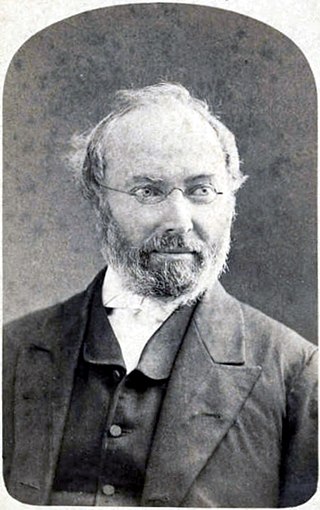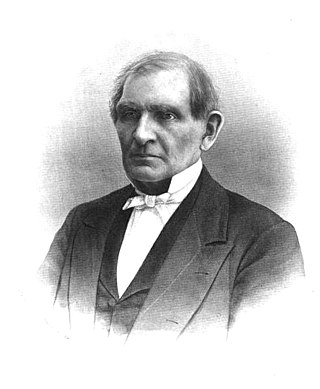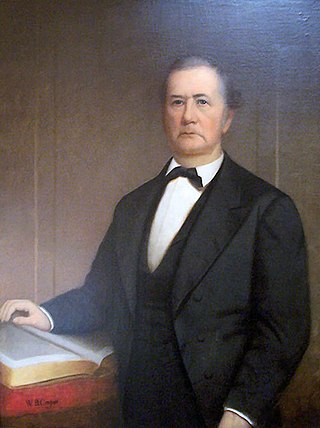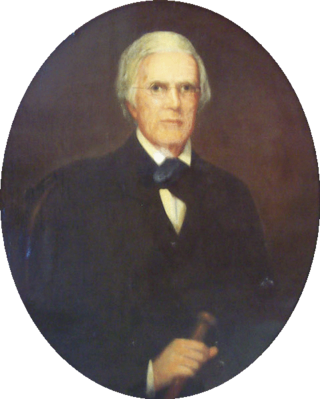The Methodist Episcopal Church, South was the American Methodist denomination resulting from the 19th-century split over the issue of slavery in the Methodist Episcopal Church (MEC). Disagreement on this issue had been increasing in strength for decades between churches of the Northern and Southern United States; in 1845 it resulted in a schism at the General Conference of the MEC held in Louisville, Kentucky.

Mount Olivet Cemetery is a 206-acre (83 ha) cemetery located in Nashville, Tennessee. It is located approximately two miles East of downtown Nashville, and adjacent to the Catholic Calvary Cemetery. It is open to the public during daylight hours.

Centennial Park is a large urban park located approximately two miles west of downtown Nashville, Tennessee, United States, across West End Avenue from the campus of Vanderbilt University. The 21st-century headquarters campus of the Hospital Corporation of America was developed adjacent to the park.

William McKendree was an Evangelist and the fourth Bishop of the Methodist Episcopal Church, and the first Methodist bishop born in the United States. He was elected in 1808.

Holland Nimmons McTyeire was an American bishop of the Methodist Episcopal Church, South, elected in 1866. He was a co-founder of Vanderbilt University in Nashville, Tennessee. He was a supporter of slavery in the United States.

The Tennessee Performing Arts Center (TPAC) is located in the James K. Polk Cultural Center at 505 Deaderick Street in downtown Nashville, Tennessee. It occupies a city block between 5th and 6th Avenues North and Deaderick and Union Streets. The cultural center adjoins the 18-story James K. Polk State Office Building.

Elijah Embree Hoss, Sr was an American bishop of the Methodist Episcopal Church, South, elected in 1902. He also distinguished himself as a Methodist pastor, as a college professor and administrator, and as an editor.

John McKendree Springer was an American bishop of the Methodist Episcopal Church and The Methodist Church, elected in 1936. He was also a pioneering missionary instrumental in developing Methodism on the continent of Africa. While in Africa he introduced schools which came to be welcomed by many of the tribal chiefs and which the young Africans came to grow very fond of. Springer is noted for exploring and journeying 1500 miles across central Africa on foot in 1907, along with his wife Helen.

The Evans Memorial Chapel is an historic chapel on the campus of the University of Denver in Colorado. It is the oldest continuously-used building for religious purposes in Denver. Completed in 1878, the Evans Memorial Chapel was built with patronage by John Evans in honor of his daughter Josephine. Evans was governor of the Colorado Territory and a founder of the Colorado Seminary. Once part of Grace Church, a prominent Methodist Episcopal congregation on 13th Avenue and Bannock in downtown Denver, the small Gothic Revival chapel was moved to the University of Denver's campus in 1959. It reopened there in April 1960, and is now the campus's oldest building. It currently serves as an interdenominational chapel and wedding venue.

The history of Methodism in the United States dates back to the mid-18th century with the ministries of early Methodist preachers such as Laurence Coughlan and Robert Strawbridge. Following the American Revolution most of the Anglican clergy who had been in America came back to England. John Wesley, the founder of Methodism, sent Thomas Coke to America where he and Francis Asbury founded the Methodist Episcopal Church, which was to later establish itself as the largest denomination in America during the 19th century.
The following is a timeline of the history of the city of Nashville, Tennessee, United States.

Thomas OsmondSummers was an English-born American Methodist theologian, clergyman, hymnist, editor, liturgist and university professor. He is considered one of the most prominent Methodist theologians of the nineteenth century.

John Berry McFerrin (1807–1887) was an American Methodist preacher and editor. He served as a chaplain in the Confederate States Army during the American Civil War.

Alexander Little Page Green was an American Methodist leader, slaveholder, and co-founder of Vanderbilt University. He was the founder of the Southern Methodist Publishing House. He was instrumental in moving the Methodist General Conference to Nashville, Tennessee, where he was the minister of McKendree United Methodist Church. He was an authority on fishing.
Church Street is a major thoroughfare in Nashville, Tennessee. It is home to several skyscrapers and buildings listed on the National Register of Historic Places.
Robert A. Young (1824–1902) was an American minister of the Methodist Episcopal Church, South. A descendant of slaveholding planters, he served as a minister in many churches in Tennessee, Alabama and Missouri in the Antebellum South. He served as the President of Florence Wesleyan University (later known as the University of North Alabama in Florence, Alabama from 1861 to 1864. He supported the Confederate States of America during the American Civil War, and he did not believe in the "social equality of the Negro" after the war. He was a founding trustee of Vanderbilt University in Nashville, Tennessee.
Colonel Edmund William Cole was an American Confederate veteran and businessman. He was the president of the Nashville, Chattanooga and St. Louis Railway, and the founder of the American National Bank.
Fountain E. Pitts was an American Methodist minister and Confederate chaplain. He established Methodist missions in Brazil and Argentina in 1835–1836. During the American Civil War, he was a chaplain and colonel in the Confederate States Army, and he became known as the "Fighting Parson". After the war, he was the first pastor of the McKendree Church in Nashville, Tennessee, U.S. He also grew poppies to make opium.

Joseph Thorpe Elliston was an American silversmith, planter and politician. He served as the fourth mayor of Nashville, Tennessee, from 1814 to 1817. He owned land in mid-town Nashville, on parts of modern-day Centennial Park, Vanderbilt University, and adjacent West End Park.
William R. Elliston (1815–1870) was an American planter, slaveholder and politician. He served as a member of the Tennessee House of Representatives from 1845 to 1847. He owned Burlington Plantation in what is now Nashville, Tennessee. An investor in railroads and real estate, Elliston entered his horses in equestrian competitions. The former plantation property was later developed as modern-day Centennial Park, Vanderbilt University and West End Park.














